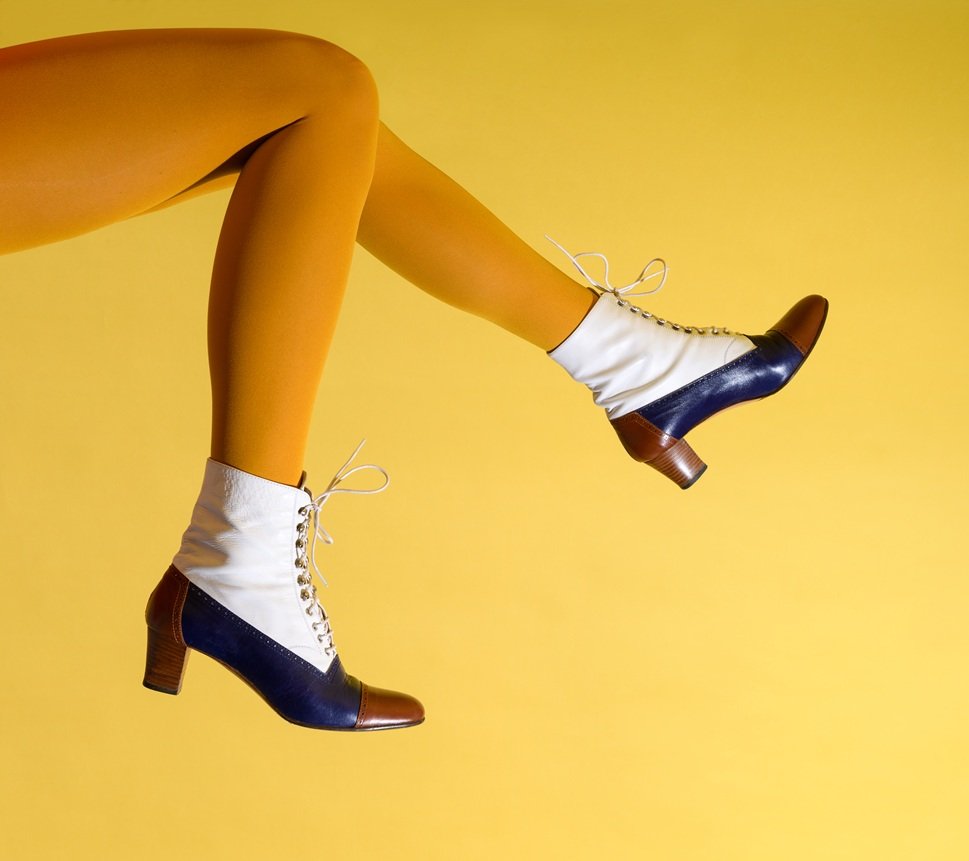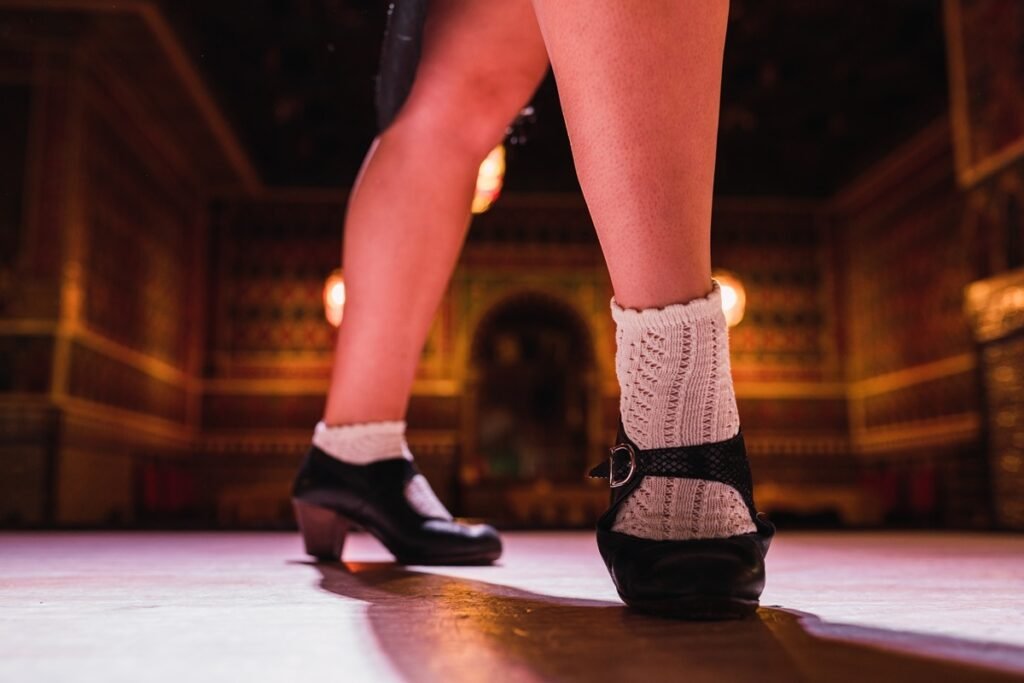Tap dance is more than just steps. It is a musical performance in motion. Every click and clack become part of the rhythm. To get clear, crisp sounds and stay comfortable through classes and rehearsals, picking the right tap shoes is key. The right pair boosts confidence protects your feet and lets you focus on your performance rather than sore soles.
Types of Shoes for Tap Dance

Oxford Tap Shoes
This classic lace up style is a favourite for aspiring professionals. Oxford tap shoes provide structure, support and consistency in sound. Their snug, secure fit helps with intricate footwork and spinning. Durability makes them ideal for long term use in both training and stage shows.
Mary Jane Tap Shoes
Perfect for beginners and younger dancers, Mary Jane shoes feature buckle straps or slip on styles. They are easy to put on, stable and often more budget friendly. The simple design makes them ideal for students and parents shopping for a first pair.
Character Tap Shoes
These are the ones with a heel, often used in Broadway style or theatrical routines. Character heels vary from low to mid height, adding elegance and offering a distinct sound. They are heavier, so they suit dancers who are already confident in basic technique.
Split Sole vs Full Sole Shoes
Full sole tap shoes have a continuous stiff sole. They offer stability and are easier to balance in, making them good for beginners or slower, heavier styles.
Split sole shoes are divided at the arch, offering more flexibility and articulation. They are ideal for intermediate and advanced dancers who need fluid foot movements.
Key Factors to Consider When Choosing Tap Dance Shoes
Fit and Comfort
Proper sizing is essential. Shoes that are too tight can cause blisters and restrict movement. Shoes that are too loose slide around and affect balance and technique. Tap dancing demands precision. Your shoes should feel snug but not painful and allow toes to point and flex freely.
Material: Leather vs Synthetic
- Leather tap shoes are breathable, conform to the foot over time and generally last longer. They offer rich, resonant sound quality.
- Synthetic options can be more affordable and require less breaking in. While sometimes less breathable, top quality synthetics now closely mimic leather in both comfort and durability.
Heel Type and Height
Heel height affects both the aesthetic of a routine and the sound produced.
- Low heels give stability, making them suitable for classes and beginners.
- Higher heels (common in character shoes) create a sharper click and a more dramatic line but require stronger ankles and experience.
Tap Plate Quality
The sound is not just about the shoe. It is about the taps. Choose shoes with well engineered tap plates, properly attached hardware and quality metal such as brass, aluminum or steel. A clean, evenly shaped tap plate produces crisp tones across floors and studios.
Weight and Flexibility
Lightweight shoes let you move quickly, add speed to your footwork and reduce fatigue during long rehearsals. Flexible soles such as split sole designs or thinner materials help dancers articulate steps like shuffles, riffs and toe taps.
Choosing Shoes Based on Skill Level

Beginners
If you are just starting, look for comfort, stability and affordability. A basic lace up Oxford or Mary Jane style with a modest heel and a full sole strike a good balance. These offer support and even, consistent sound without compromising your first experience.
Intermediate Dancers
For those with a few months or years of experience, look for balance. You want shoes that let your foot articulate more freely while still giving solid sound quality. Split sole versions or light leathers with well engineered taps work well.
Advanced or Professional
Performance ready dancers should invest in premium tap shoes with top grade leather, custom tap plates, durable construction and fine heel craftsmanship. These shoes often deliver superior resonance and longevity, ideal for demanding rehearsals and live shows.
Tips for Testing Tap Shoes Before Buying
- Check sound on different floors. Try them on wood studio floors and harder stage like surfaces. The sound should be clear and even whether it is laminate, hardwood or a sprung dance floor.
- Ensure a snug fit without pinching. Walk and do simple taps to check your toes are not cramped and your heel does not slide.
- Walk, shuffle and tap. Do not just stand in them. Dance a few steps. Feel for comfort, give in the sole and how your ankle responds. Flexibility and weight should feel natural.
- Test heel stability. Especially in character shoes, do simple turns and walking steps to see if the heel stays stable and comfortable.
For students, parents and performing artists, these options combine comfort, sound quality and style. If you’re seeking a performance-ready heeled option, see our article on heel shoes for women. They’d make a great fit for character-style tap performances.
Maintenance and Care for Tap Shoes
- Clean regularly. Wipe leather shoes with a damp cloth and use a leather conditioner every few weeks for breathability and longevity. Synthetic materials can be wiped clean with mild soap and water.
- Store properly. Keep shoes in a cool, dry place. Use shoe bags or boxes to prevent dust and avoid damp basements or attics.
- Check taps often. Tap plates can loosen over time. Regularly tighten screws or replace worn washers.
- Avoid moisture. Moisture can warp taps and damage the shoe’s sole or leather. Let them air dry between uses and use moisture absorbing powder if needed.
FAQs About Tap Dance Shoes
How long do tap shoes last with regular practice?
With consistent practice a few times a week, a well made pair will last anywhere from 6 months to a year or longer if rotated with another pair. Premium leather shoes with quality taps can last several years if properly maintained.
Can I use the same shoes for stage and studio practice?
Yes. If they are durable enough, many dancers use a performance pair only on stage to maintain sheen and tap integrity and a separate, slightly less expensive pair for rehearsals. Rotating them extends the life of both pairs.
Should beginners start with flat or heeled tap shoes?
Beginners often benefit from starting with low heeled or flat shoes such as Oxford or Mary Jane styles to build basic technique. Once comfortable, they can transition to mid height character heels if required by choreography or personal preference.
Your shoes are an extension of your rhythm and expression. The right pair gives the sound you want, keeps your feet comfortable and lets your performance shine. Invest in quality, test before you buy and let every tap speak with confidence.
